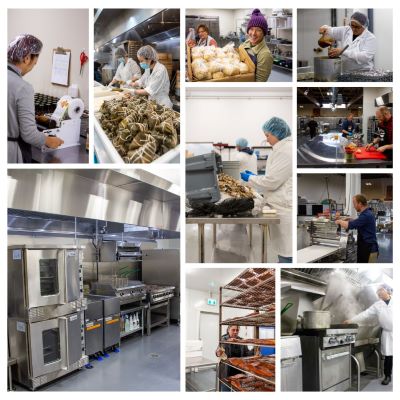What is a food hub?
Food hubs refer to shared-use food and beverage processing facilities that offer food and agriculture businesses access to commercial processing space, equipment, expertise and resources to support business development and growth.
The network’s food hubs vary in size and scale, depending on the needs and capacity of the regions in which they are located. There is flexibility for food hubs to offer resources and services that are regionally-tailored for shared food processing and innovation, however, each of the Network’s food hubs offers some key, basic elements that are described below.
Facility components
Required facility components:
- Food processing area(s) or room(s) and equipment
- Food packaging area and equipment
- Food storage (cold/dry)
- Office/board room/training space
- Appropriate food safety requirements and plans for processing activities
Optional facility components (non-exhaustive list):
- Food testing laboratory and/or equipment
- Mobile processing or packaging equipment
- Equipment library
Service components
Required service components:
- Product development services
- Business services
- Training and education on food processing and food safety
- Facility and services coordinator
- System for user booking of and access to services and facilities
Optional service components (non-exhaustive list):
- Applied research e.g., in process technology, food safety, formulation, etc.
- Laboratory services e.g., food testing, analysis, quality assurance services, etc.
- Value chain coordination services
- Aggregation services
- Distribution services
- Food waste redistribution services

